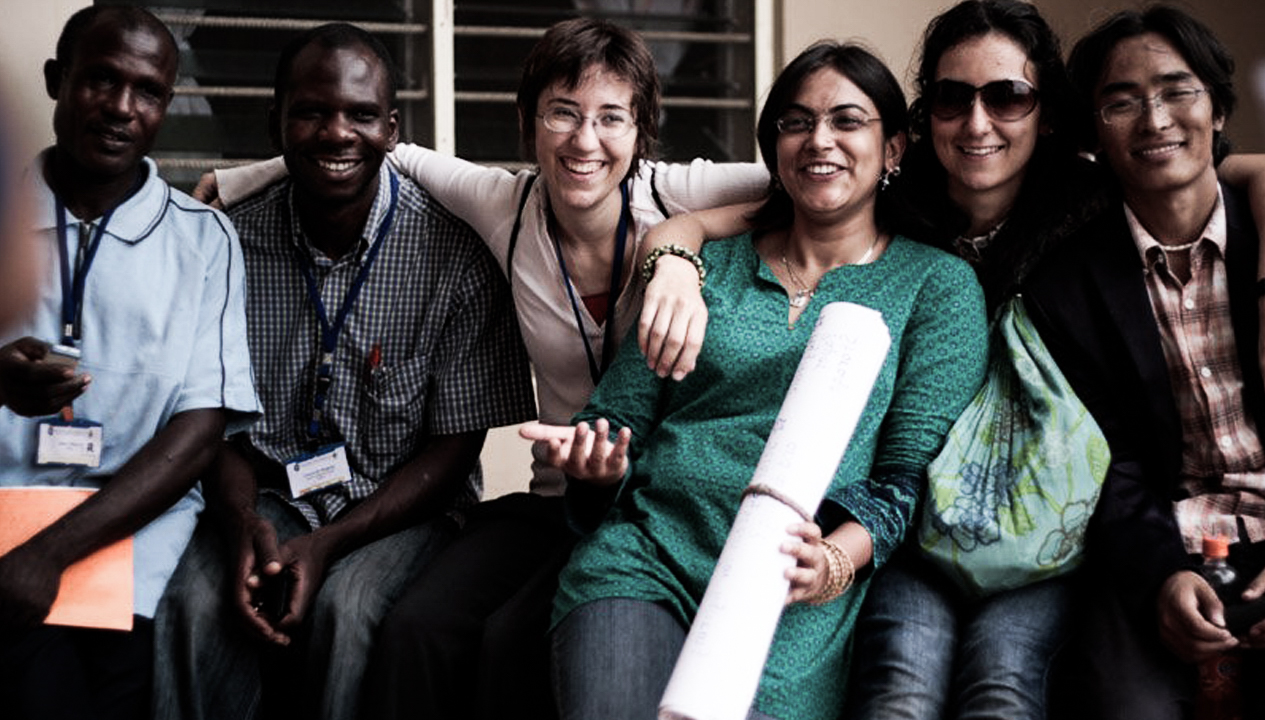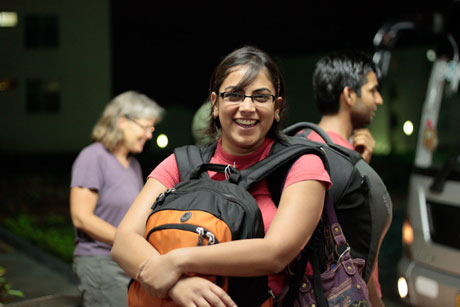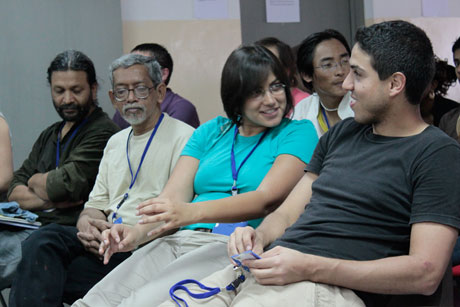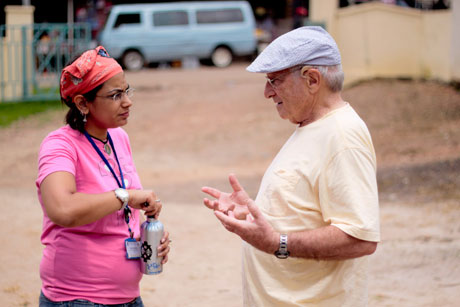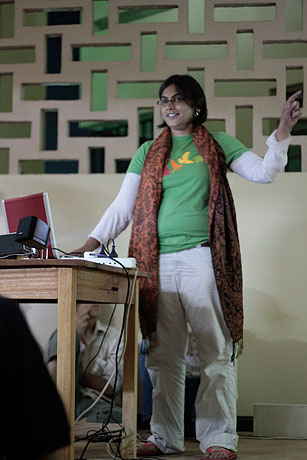I would like to call it a conincidence that my IDDS experience started with butterflies and ended with butterflies. The picture that documents my arrival at Tek Credit Union Hostel at KNUST, Kumasi does not capture the butterflies that were in my stomach.It is hard to believe that I could grin so wide after spending 8 hours in a bus and an entire day before that rushong through airport terminals. After a spring of anticipation and a summer of preperations, I was finally in Ghana, not really sure what to expect from IDDS.
The International Development Design Summit is “is a month-long collaboration that brings together people from around the globe to build technologies for communities in the developing world.” A diverse group with people from more than 20 countries speaking a variety of languages and coming from different backgrounds, we were engineers and designers and students and professors and farmers and social activists, but we all had one goal – to make an impact in the community around us.
I found myself having breakfast with an Irish “lad” – Niall Walsh – who had just graduated in English Literature from Trinity College. What was he doing there? Other than blogging about the conference, Niall, Meg and I casted our first aluminum piece of art at Suame Magazine, an informal cluster of 100,000 (or more) mechanics working in the heart of Kumasi.
In one of the preliminary design activities, I worked with Suprio Das and Miguel Chaves. Suprio is an Indian from Calcutta who is currently working with people in nearby villages affected by arsenic in drinking water. His terrace is his workshop and his toilet is his lab. Miguel is a studying Mechanical Engineering at the University of Sao Paulo and is one of the founders of Engineers Without Borders Brazil, which he started after his first IDDS summer in 2007.
My project for the rest of the summer was designing and building “child-friendly latrines”. My team was as diverse as the rest of IDDS. Gago arrived a few days late from Tibet, and along with him brought a lot of music and calm to our group. (I was surprised to hear him sing a familiar Bollywood song in Tibetan!) Mariam is half Iranian and half Irish who grew up in Spain and just graduated from the University of Bristol in the United Kingdom. She spent last summer writing guidelines for planning refugee camps and is currently working with water and sanitaiton in Ecuador. Amber is a mechanical engineering student from MIT who arrived with just a tiny backpack and lots of ideas on composting and moulding toilet seats. Casserdy makes and repairs wheelchairs in Zambia and was our go-to person for any kind of fabrication. And John Manu from New Longoro, Ghana not only taught us about the Ghanian context, but made his village our second home.
When all of us first got together, we had absolutely no idea how this was going to work. We had not one participant from the year before, and we started on a blank page. Little did we knkow that the IDDS vision of “prototypes, not papers” would not be our biggest challenge, but how to get the protoype on a pick-up truck would be the hardest thing to do!
To help with our projects, we had a team of mentors who were accessible 24X7. A pool of talent was available to us, whether it was research techniques from IDEO or engineering facts from MIT. One of the best conversations I had that summer was with Paul Polak, the founder of International Development Enterprises (IDE), a non-profit organization which has ended poverty for millions of people in rural areas worldwide. His book, “Out of Poverty” is a must-read for anyone who wants to work in the development sector.
We learn not only from the mentors, but from one another too. Miguel taught us how to make a solar water heater using recycled materials. All you need is PET bottles, empty tetrapacks, PVC pipes, and black paint. We built a module that would get four of us ten minutes of a hot shower everyday. And by the end of IDDS, all of us would have had a hot shower atleast once!
I was glad that I could share some of the work that I had been doing at Art Center with the rest of the participants. Sometimes, while sitting down in the basement of GradID, I find myself alone and lost in this world of creating products for premium luxury experiences. While I am glad that more and more classes are focussing on social and sustainable design, spending a summer with people who are working towards the same goals as you, creates an unimaginable community of high energy and great respect. It was nice to get feedback on projects from experts and people living in the areas that it was designed for, to find partners who would like to work with you further, or just have someone come and say – “Wow! That was an amazing presentation!”
I would like to call it a conincidence that my IDDS experience started with butterflies and ended with butterflies. On the last day of Maker Faire Africa, I met Louisa from Butterfly Works – a social solution and design agency. I would like to end with a quote from their book – ” A flutter of a wing of a butterfly can result in a chain of events which changes the lives of millions of people. Butterflies do not push. They inspire. They do not follow trodden paths, but less predictable trajectories, graceful, cross-pollinating the places they visit, curious, relentless.”
